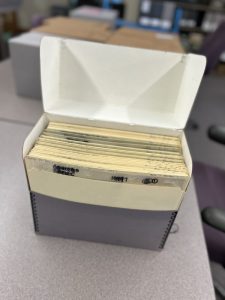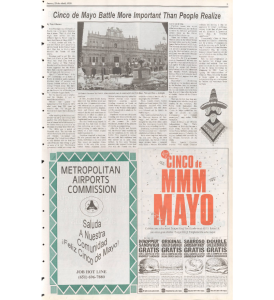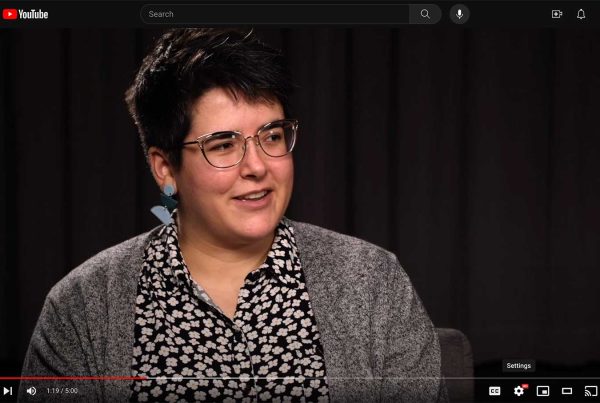Minnesota is home to a large number of Latine community members, including immigrants. Since the early 1990s, the bilingual newspaper, La Prensa de Minnesota, has documented their experiences and served as a source of information for communities. The La Prensa de Minnesota historical records were donated by the Duarte family to the Immigration History Research Center Archives (IHRCA) in 2021, as they wished them to be publicly accessible and available into the future. This donated collection includes copies of the newspaper, as well as photographic prints or negatives of local, national, and international people and events. These photos date from 1994 to 2003 and provide a rich view into the political and social life of Latine community.
I recently finished preparing the collection to open it up for public use. This reflection piece shares about that work. I have also created a display of some of the materials, available for viewing in the IHRCA display case on the third floor of Andersen Library, which is open to the public, staff and students typically between 9 a.m. and 5 p.m., Mondays through Fridays.
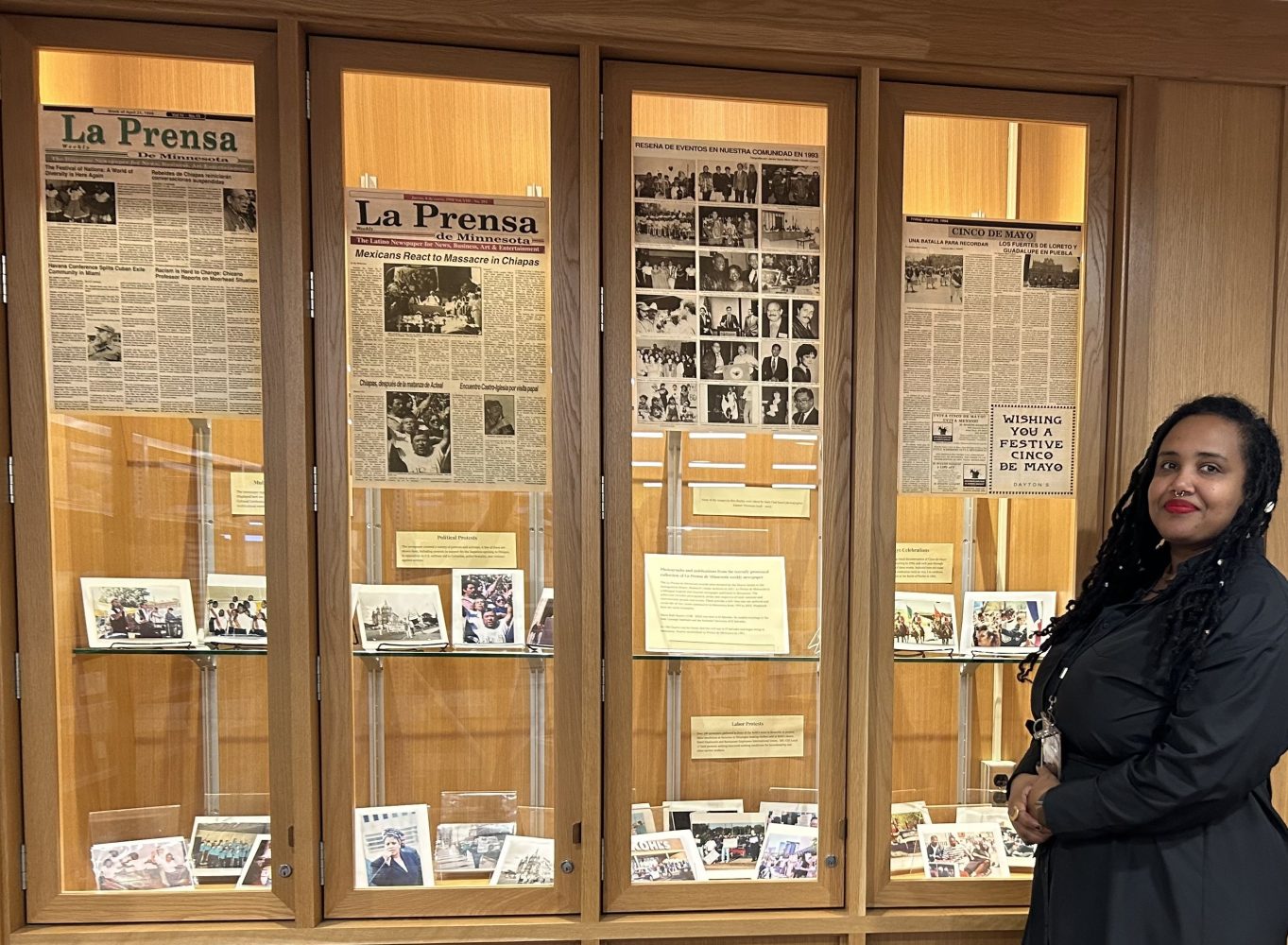
Ayantu Tibeso stands in front of the display case outside IHRCA, sharing some of the La Prensa de Minnesota materials.
Throughout the time I have spent at IHRCA, I have fielded questions from friends and family about exactly what archivists do, a reminder that archival work is invisible to the public. Given these questions I feel compelled to explain a bit about my experience in the archives.
As a doctoral student in the school of Education and Information Studies at UCLA, I took many courses about the ways archival materials are created, organized and made accessible to users. I have also conducted research in archives for my dissertation in Addis Ababa, Berlin, Nairobi, and London. Prior to coming to IHRCA, I had spent quite a bit of time thinking and writing about archives, as I continue to do.
My experience as a processing archivist for IHRCA has provided me the opportunity to occupy a different position. Instead of thinking about archives as a user, I have learned about the practice of archival work, including consideration of future users of the material. Instead of analyzing the content of what is in the archives, I was focused on preserving the originals, and describing the collection as fully as possible so future researchers may be able to determine its usefulness for their purposes.
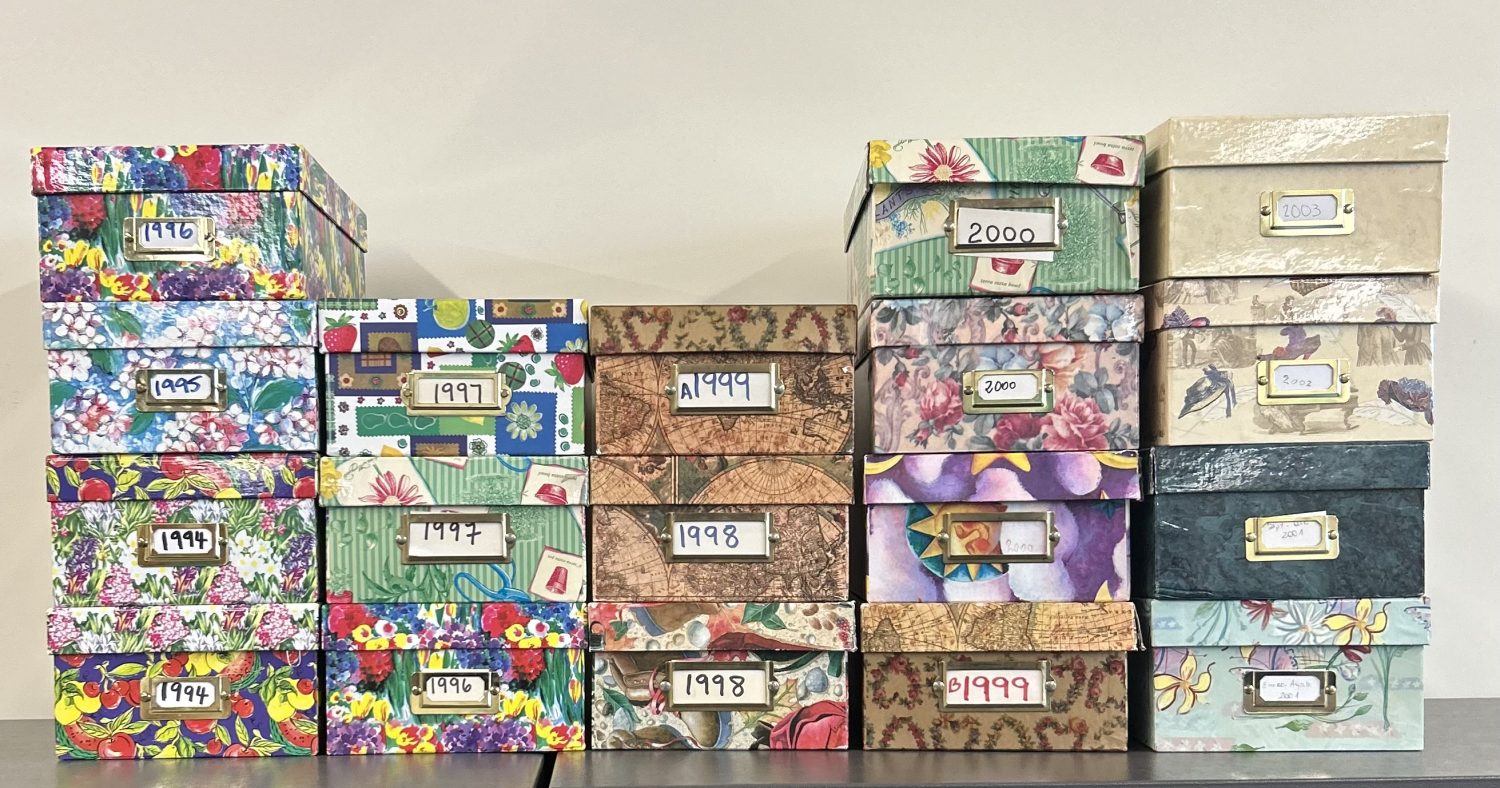
Picture of the original boxes in which the La Prensa de Minnesota photos were donated by the Duarte family.
I was assigned processing of the newly donated photography collection of La Prensa de Minnesota shortly upon my arrival at IHRCA. Issues of the newspaper dating from 1991 to 2005 were previously digitized, with bilingual metadata, and are now freely available online through UMedia. I was asked to work on the photographic prints and negatives that correspond to the published paper. These amounted to approximately 8,500 photos neatly organized by the Duartes, having arrived in 18 colorful boxes; each held more than a dozen envelopes containing hundreds of 4-by-6-inch prints and corresponding negatives.
In the initial phase of processing, wearing cotton gloves to protect the prints, I rehoused the photos by moving them from their original envelopes into stable plastic enclosures and into acid free folders. This is part of the preservation work that archivists undertake to prolong the lives of materials in their custody. On each new sheet or folder, I wrote the corresponding heading/description and date, in either English or Spanish as found on original envelopes. These are all customary actions in archival practice. Next, I placed these into archival boxes, and assigned numbers and folders to all. Now, the donated photos are housed in 28 new boxes totaling 12 linear feet and are housed safely in the Andersen Library caverns. From here, they will be carefully retrieved by archivists whenever users request them.
Archival processing involves both physical and intellectual organizing of materials. Once I completed rehousing the photos, I moved onto entering the inventory information into ArchivesSpace, the information management system used by IHRCA. This step is essential to making the collection accessible to users.
The next step involved more writing in the finding aid, also referred to as the collection guide. The finding aid includes the detailed inventory and acts as a road map of the collection. Finding aids are developed by archivists for users. Archivists labor to prepare finding aids that contextualize collections so that users are able to determine whether the contents may be useful to their research or need. Without a finding aid, users may have no idea what is in a collection and whether it will be useful to them or not.
During the initial stage of rehousing the materials as well as entering their details into ArchivesSpace, I had a lot of time to think as I worked. I found myself reflecting on all the behind-the-scenes work that goes into making archival information accessible both in analog form and digitally. So much archival labor occurs behind the scenes, away from the eye of users. As archivists very well know, processing work is an invisible and at times tedious, but essential part of making records available. By the time a user receives a box of materials or a digital file in front of them, someone would have already worked hours upon hours on the backend preparing those materials for use. As a result of my work during the past year, I now have a much better understanding and appreciation of this work.
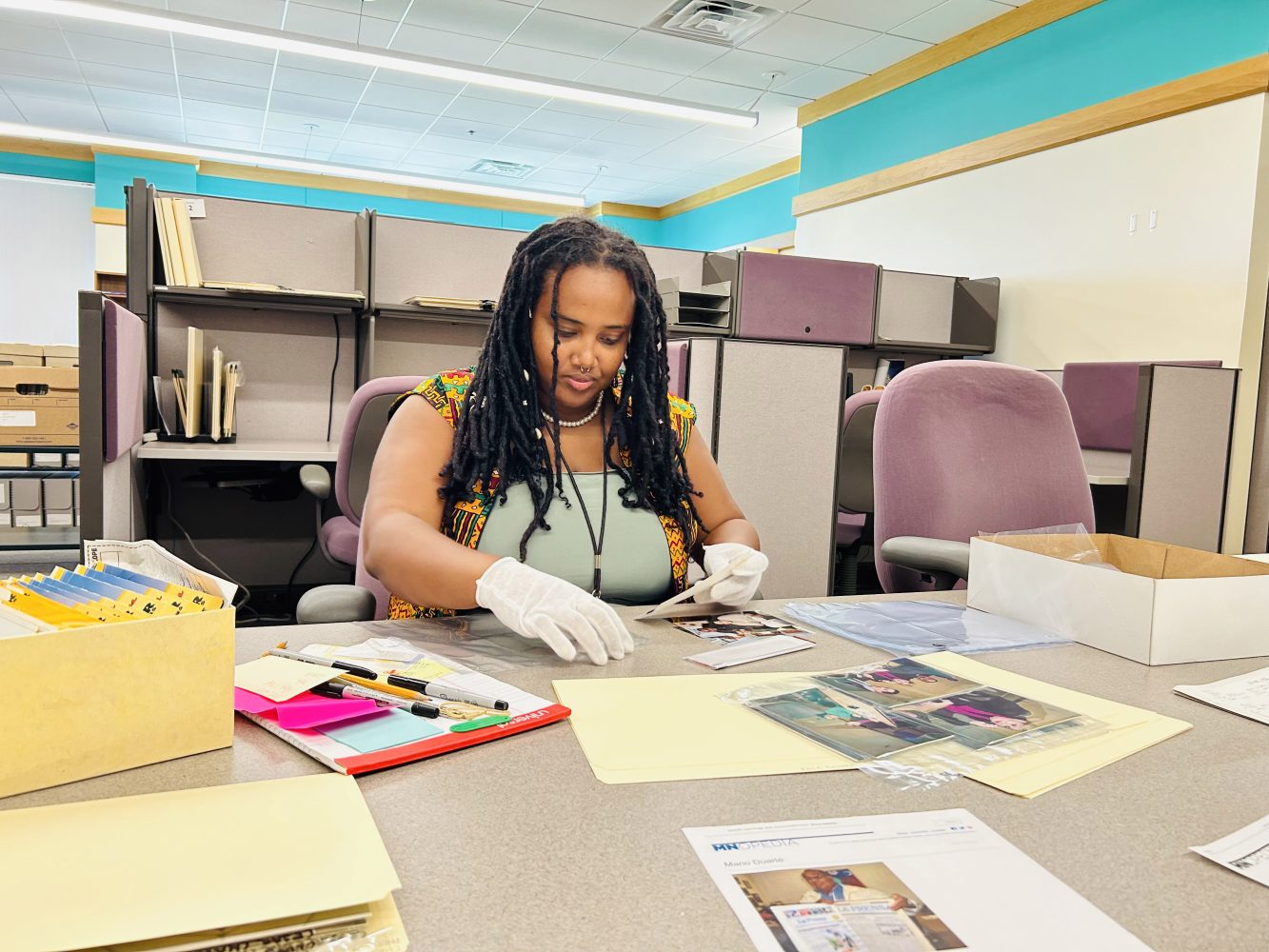
Ayantu Tibeso transferring photographs from original envelopes into archival sleeves for preservation.
I learned quite a lot in the process of preparing the finding aid. For instance, I learned about the founder of La Prensa, Mario Duarte, who was an immigrant who fled the civil war in El Salvador in 1982 and lived in St. Paul with his family. Through an oral history interview available at the Minnesota Historical Society, I learned about his early years in Minnesota and his motivations to start the newspaper. He sought to close an information and communication gap he noticed in the Latine community. Duarte launched La Prensa de Minnesota in 1991 and served as its editor until 1999. For a while, he was the sole staff member, wearing many hats as writer, editor, and distributor. Duarte was committed to wide dissemination of the newspaper to both non-Spanish speaking Latines and to those living outside the Twin Cities. He distributed La Prensa through local businesses, schools, and community centers as well as sending boxes of the newspaper to rural towns.
A few months ago I found an obituary for Mario Duarte, and I felt that I had received the sad news of the death of a person I knew. After all, I had spent a year with materials that Duarte had commissioned, cared for, and whose archival value he had clearly recognized. In addition to his work on La Prensa, Duarte was an active member of the Latine community in Minnesota. He served on many community boards as well as edited publications such as “Visiones de La Raza” (of Centro Cultural Chicano, now Centro Tyrone Guzman). He was also the producer of the organization’s radio program “Centro Cultural Chicana Informa,” and hosted the longtime music show “Brisas Latinos” on KMOJ. Duarte passed away at his home on September 16, 2023. He is memorialized as an important pillar of the Latine community.
A few weeks later I similarly found an obituary for Emmet Timmons, an African American photographer who had taken many of the photos in the La Prensa collection in the 1990s and early 2000s. In addition to his work for La Prensa, Timmons worked as freelance photographer for many community based newspapers in the state including “Asian American Press” and the “Minnesota Spokesman-Recorder.” Timmons passed away on April 5, 2021.
Both Timmons and Duarte had worked to document immigrant communities of color in Minnesota, and in some small way I felt that I was honoring their work through working to preserve and make available their contributions. It is my hope that people will explore these records to learn about the rich cultural and political history of the Latine community in Minnesota.


